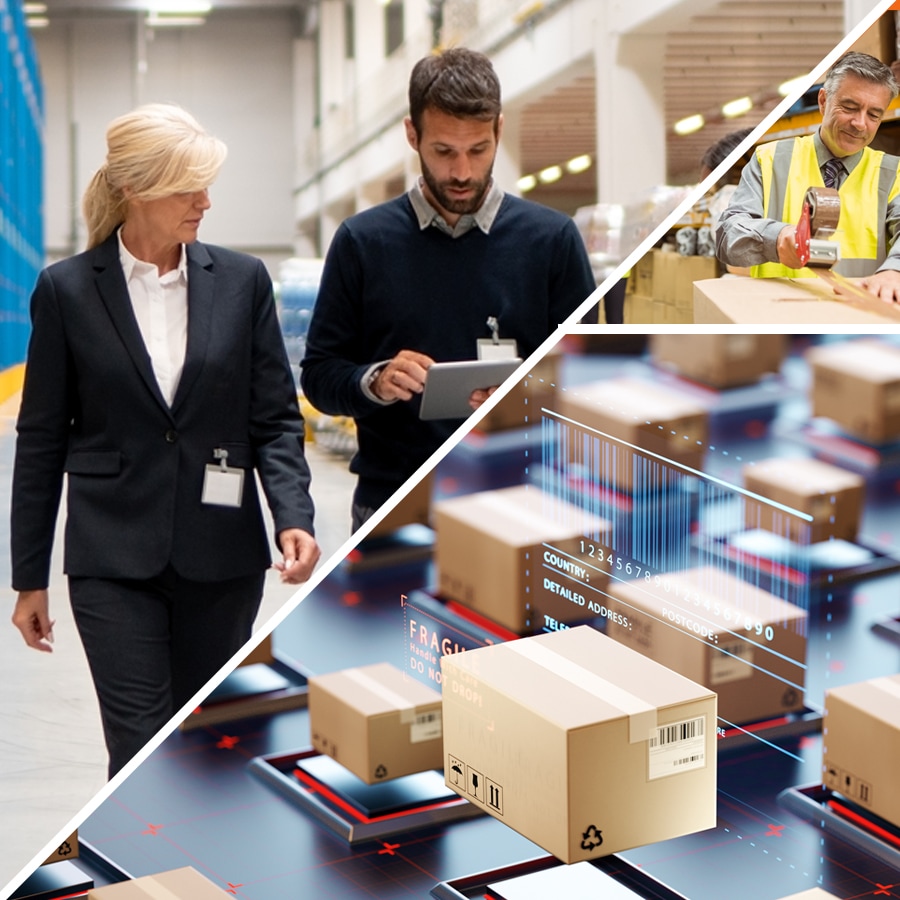
“Replace Inventory with Information” was the guiding principle that led to multiple initiatives more than a decade back. This could be a natural outcome of relentless focus on lean six sigma programs in those days. Also, JIT manufacturing approaches focused heavily on aligning inventory as and when needed by the process. These led to significant investments in manufacturing, sourcing and procurement, warehousing, and logistics processes. For vertically integrated organization, data flow was not a problem and such organizations gained a lot from these initiatives.
As a natural extension, the same concepts began gaining traction in industries that have multiple parties in their value chain. Improving IT maturity across demand ecosystem players made the data flow cost-effective. Standardization initiatives like UNSPSC, GS1, and EDI led to acceptance of such programs across industries. In parallel to such initiatives, the industry operating model was moving away from a fixed value chain to a value web/network. That meant enabling higher data standardization and supporting multiple data integration scenarios. Also, global organizations realized the importance of emerging markets as drivers of consumption and not just manufacturing hubs or providers of cheap labor. This meant the information flow was crucial as managing inventory across the globe is a complex problem. Emerging markets rely on a distribution led channel that has more layers than a modern trade setup.
Visibility and customer centricity journey
Increased focus on customer-centricity, sustainability, collaboration, and regulatory requirements around traceability are driving renewed interest in capturing data across the whole value network.
This means that external data is no more limited to sales and inventory.
Today the whole path to purchase cycle of a product has been disrupted and has become digital-centric. Access to this data is crucial for any CPG organization to ensure that their marketing dollars are generating a good return on investments. Personalization and micro segmentation of offerings force manufacturers to collaborate with channel partners that have direct access to consumers. Brand owners themselves are investing heavily to reach out to end customers directly. Sustainability initiatives are forcing brand owners to track the complete flow from ‘Farm to Fork.’ Regulatory requirements like traceability mandate tracking the movement of goods so that they can be audited and corrective actions initiated immediately in case of a recall. Increased data sharing between the partners is becoming the norm. Access to quality data has become essential to drive orchestration and collaboration across multitudes of partners.
The number of partners that a typical brand owner exchanges information with can easily run into few hundreds. All the partners cannot be expected to have high IT maturity, technology homogeneity, data governance standards, or the wherewithal to make such investments even if they understand the importance of data sharing. Multiple large organizations are running transformation programs to incentivize data sharing and reduce the operational cost for partners in complying with such a mandate.
Ecosystem Integration platform
Any investment in enabling faster onboarding to support the evolving partner landscape needs to be cognizant of a variety of integration scenarios. It could involve anything from scheduled bulk file transfers to event notifications that arrive in real-time. Such data could be posted on an (s) FTP site or accessed via the portal, arriving as an attachment to the email or API interface in multiple formats from CSV to XML, JSON, EDI, PDF or other unstructured formats that may require use of cognitive technologies to decipher the content.
A good supply chain ecosystem integration framework requires great abstraction to support many-to-many connections truly. The semantics of data payload and data communication protocols need to be clearly segregated. Same message can arrive in a different format and can be communicated to another party with enrichment in a totally different format. This segregation of data payload and data protocol using industry-standard canonical models and adapters ensures a more manageable environment with a lower cost of ownership. Given the nature of a network, a partner may be sharing similar information with multiple partners
-
Data security (both at rest and during transfer) is non-negotiable, and such a platform must be hosted in the cloud to drive multi-tenancy. Such an integration platform needs to have significant automation towards configurable self-monitoring to drive compliance and data governance requirements.
-
A comprehensive support policy ensures that enough hand-holding is provided for partners that may be lacking in IT maturity. The SLA-based support model is crucial for the success of ecosystem integration as we onboard newer geographies across developed and emerging markets.
Ecosystem Insights and Orchestration platform
Once the integration layer enables data acquisition and dissemination, a logical next step is to enable insights from the data captured. However, ensuring master data integrity across the ecosystem is yet utopian and can require significant data harmonization effort. This can significantly reduce the value derived from the data and should be of utmost priority for the vast ecosystem. Standardization of master data across the ecosystem deserves its transformation track.
Harmonized data opens a multitude of scenarios to derive insights, causal forecasts, and prescriptive actions to enable a win-win situation for all participants. This is a critical step as it incentivizes every partner to improve data quality and data sharing. Collective learning is one of the prime motivators for ecosystem cooperation.
The partners range from global supply chain hall of famers to a small retail store in developing markets. The platform has matured over ten years and is the backbone of a multi-tenant solution processing terabytes of data and meeting stringent SLAs
The ecosystem-driven operating model is a business reality. Organizations must manage their investments in integration and insights platform with long term transformation mindset and not just an IT initiative.





